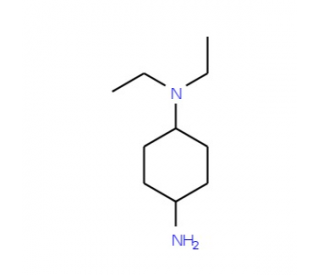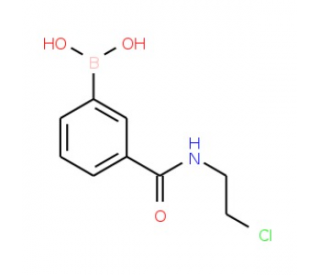详细说明
Species Reactivity
Human
Specificity
Detects human CXCL5/ENA‑78 in direct ELISAs and Western blots. In direct ELISAs, no cross-reactivity with recombinant human CXCL1, 2, 3, 4, 6, 7, 8, 9, 10, 11, 12, 13, 16, recombinant mouse CXCL1, 2, 4, 6, 7, 9, 10, 11, 12, 15, 16, recombinant rat CXCL5, and recombinant porcine CXCL8 is observed.
Source
Monoclonal Mouse IgG 1 Clone # 33103
Purification
Protein A or G purified from ascites
Immunogen
E. coli-derived recombinant human CXCL5/ENA-78
Ala37-Asn114
Accession # P42830Formulation
Lyophilized from a 0.2 μm filtered solution in PBS with Trehalose. *Small pack size (SP) is supplied as a 0.2 µm filtered solution in PBS.
Label
Unconjugated
Applications
Recommended
ConcentrationSample
Western Blot
1 µg/mL
Recombinant Human CXCL5/ENA‑78 (Catalog # )
Please Note: Optimal dilutions should be determined by each laboratory for each application. are available in the Technical Information section on our website.
Preparation and Storage
Reconstitution
Reconstitute at 0.5 mg/mL in sterile PBS.
Shipping
The product is shipped at ambient temperature. Upon receipt, store it immediately at the temperature recommended below. *Small pack size (SP) is shipped with polar packs. Upon receipt, store it immediately at -20 to -70 °C
Stability & Storage
Use a manual defrost freezer and avoid repeated freeze-thaw cycles.
12 months from date of receipt, -20 to -70 °C as supplied.
1 month, 2 to 8 °C under sterile conditions after reconstitution.
6 months, -20 to -70 °C under sterile conditions after reconstitution.
Background: CXCL5/ENA-78
CXCL5, also known as epithelial cell-derived neutrophil-activating peptide (ENA-78), is an 8 kDa proinflammatory member of the CXC subfamily of chemokines. Its Glu-Leu-Arg (ELR) motif confers angiogenic properties and distinguishes it from ELR-CXC chemokines which are angiostatic (1‑3). Human CXCL5 shares 57% amino acid (aa) sequence identity with mouse and rat CXCL5. Among other human ELR + chemokines, it shares 77% aa sequence identity with CXCL6/GCP-2 and 35%‑51% with CXCL1/GRO alpha, CXCL2/GRO beta, CXCL3/GRO gamma, CXCL7/NAP-2, and CXCL8/IL-8. Inflammatory stimulation upregulates CXCL5 production in multiple hematopoietic cell types, fibroblasts, endothelial cells, and vascular smooth muscle cells. In vivo, CXCL5 is elevated at sites of inflammation and pulmonary fibrosis where it promotes neutrophil infiltration and activation as well as angiogenesis (3‑6). Its upregulation contributes to increased vascularization, tumor growth, and metastasis in many cancers (6‑9). Full length CXCL5 (78 aa) is trimmed at the N-terminus by cathepsin G and chymotrypsin to ENA-74 (74 aa) and ENA-70 (70 aa), with the shortened forms showing increased potency relative to full length CXCL5 (10, 11). CXCL5 exerts its effects primarily through interactions with CXCR2 (6, 12). It also binds duffy antigen receptor for chemokines (DARC), which can limit CXCR2-mediated responses (13, 14).
References:
Strieter, R.M. et al. (2005) Cytokine Growth Factor Rev. 16:593.
Balestrieri, M.L. et al. (2008) Cardiovasc. Res. 78:250.
Walz, A.. et al. (1991) J. Exp. Med. 174:1355.
Strieter, R.M. et al. (1992) Immunol. Invest. 21:549.
Koch, A.E. et al. (1994) J. Clin. Invest. 94:1012.
Begley, L.A. et al. (2008) Neoplasia 10:244.
Vandercappellen, J. et al. (2008) Cancer Lett. 267:226.
Arenberg, D.A. et al. (1998) J. Clin. Invest. 102:465.
Miyazaki, H. et al. (2006) Cancer Res. 66:4279.
Wuyts, A. et al. (1999) Eur. J. Biochem. 260:421.
Nufer, O. et al. (1999) Biochemistry 38:636.
Ahuja, S.K. and P.M. Murphy (1996) J. Biol. Chem. 271:20545.
Kashiwazaki, M. et al. (2003) Int. Immunol. 15:1219.
Horton, L.W. et al. (2007) Cancer Res. 67:9791.
Entrez Gene IDs:
6374 (Human)
Alternate Names:
CXCL5; CXCL5/ENA-78; ENA78; ENA-78










 粤公网安备44196802000105号
粤公网安备44196802000105号